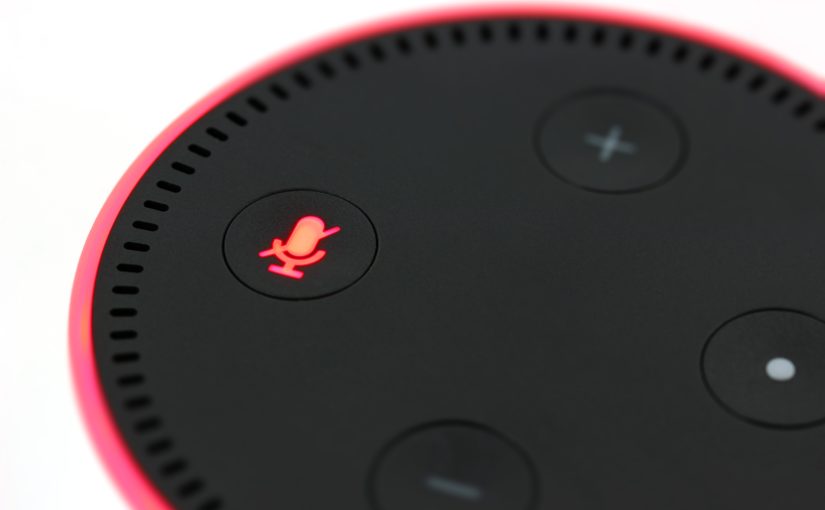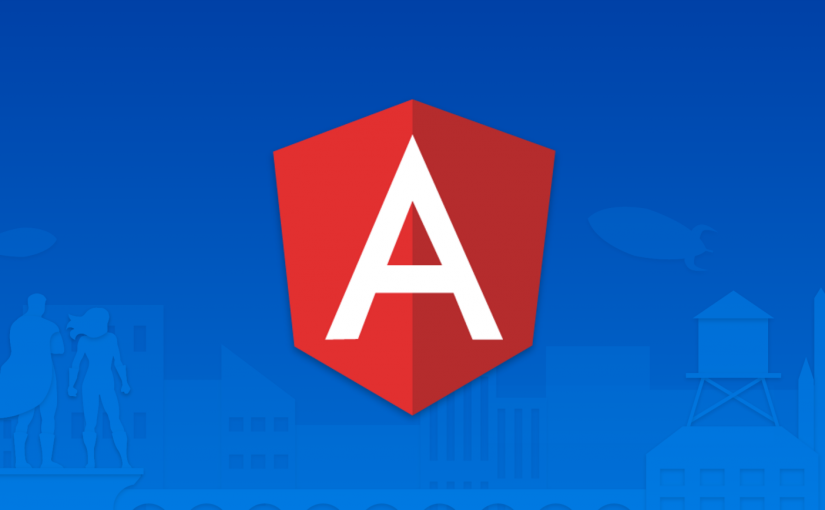I am running for the W3C Technical Architecture Group (TAG) this year. In this blog post, I will outline my technological background and share the three key contributions I would like to make if I am elected to the TAG in more detail.
Continue reading Running for W3C’s Technical Architecture GroupYear of PWA: A Summary
On New Year’s Eve 2017, Maxim Salnikov proclaimed 2018 to be the year of Progressive Web Apps. The #YearOfPWA is almost over now and we’ve come a long way. Here’s a short recap of all the fantastic things that happened.
Continue reading Year of PWA: A SummaryAlexa, Tell Azure Logic Apps to Post a Message to Slack
Alexa is Amazon’s voice-controlled personal assistant. It’s super convenient and so you might want to create your own skills as well. You’ll be surprised how easy this is can be with the help of Microsoft Azure Logic Apps.
Here’s our sample project: Let’s say you share a family Slack with your spouse and children. Whenever food is ready or the rabbits need to be fed, you want to send a Slack message to your children. This should be as easy as saying:
Alexa, tell my children: food is ready.
Alexa, tell my children to feed the bunnies.
We’ll do all of this with zero lines of code, in less than 15 minutes. Ready, set, go!
Continue reading Alexa, Tell Azure Logic Apps to Post a Message to Slack
Push Your ASP.NET Core 2.0 App to Azure Container Registry via Bitbucket Pipelines
Bitbucket is a quite popular cloud-hosted source code repository. It has a free plan which includes unlimited private Git or Mercurial repositories for up to five team members and even 50 build minutes per month. Bitbucket Pipelines is its integrated Continuous Integration tool, comparable to Travis or AppVeyor: A repository can be configured to run a certain script after each commit. For example, to check if the build passes—or to build a Docker container of your ASP.NET Core 2.0 app which is automatically pushed to Azure Container Registry (ACR), from where you can deploy your container to Azure App Services or robust Kubernetes clusters. In this blog post, I will explain how to set up Bitbucket Pipelines, build your ASP.NET Core 2.0 app (checked in to a BitBucket Git repository), package it as a Docker container and push it to your Azure Container Registry.
Continue reading Push Your ASP.NET Core 2.0 App to Azure Container Registry via Bitbucket Pipelines
Angular & TypeScript: How to Import RxJS Correctly?
Important update: RxJS 5.5 brought us Pipeable Operators that eliminate some of the problems noted below. If you can update to TypeScript 2.4, RxJS 5.5, Angular 5 and Angular CLI 1.5, you should definitely go with Pipeable Operators.
Angular has some third-party dependencies, one of which is RxJS, a library which makes reactive programming very easy to use. The library is obtained as an npm package. In order to use functionality from the RxJS library, it has to be imported first. So before you can use an operator such as map in the following snippet, it has to be imported:
route.params .map(params => params.id) .subscribe(id => console.log(id));
Whereas IDEs such as WebStorm (prior to 2017.2) or Visual Studio Code do a good job for auto-importing symbols, they don’t suggest anything at all for RxJS symbols. Both IDEs simply print the following error message from TypeScript:
Property ‘map’ does not exist on type ‘Observable’.
Continue reading Angular & TypeScript: How to Import RxJS Correctly?
Angular & TypeScript: Writing Safer Code with strictNullChecks
On May 4, Angular 4.1.1 was released. This release fulfils a promise already made for Angular 4.1: Adding support for TypeScript’s strictNullChecks compiler option added in TypeScript 2.0.
Strict Null Checking = Safer Code
This transpiler flag enables us to write safer code. TypeScript with strict null checking enabled feels even more comfortable for developers with a static-typed language background. Without strict null checking, assigning null or undefined for instance to a variable of type number is perfectly possible:
Continue reading Angular & TypeScript: Writing Safer Code with strictNullChecks
Angular 2 & Protractor Timeout: Here’s How to Fix It
Testability is an important discipline in application development. Angular was always built with testability in mind. Protractor is Angular’s end-to-end testing framework. It was originally created for AngularJS, the first edition of the popular SPA framework, but works perfectly with Angular 2 by simply setting useAllAngular2AppRoots to true in Protractor’s config.js. In addition, you can optionally specify an element name for the rootElement property to exclusively test against this element.
exports.config = {
framework: 'jasmine',
seleniumAddress: 'http://localhost:4444/wd/hub',
specs: ['spec.js'],
useAllAngular2AppRoots: true,
// rootElement: 'root-element'
};
However, if you are using Angular 2 and Protractor in combination, you might stumble upon one of the following error messages:
Failed: Timed out waiting for Protractor to synchronize with the page after 11 seconds. Please see https://github.com/angular/protractor/blob/master/docs/faq.md.
Error: Timeout - Async callback was not invoked within timeout specified by jasmine.DEFAULT_TIMEOUT_INTERVAL.
Here’s how to fix those errors:
Continue reading Angular 2 & Protractor Timeout: Here’s How to Fix It
Testing Cordova Apps on Your BlackBerry 10 Phone
Apache Cordova, better known as PhoneGap, Adobe’s commercialized edition of Cordova, allows developers to create apps for a variety of platforms using a single HTML5, CSS and JavaScript code base. This approach of cross-platform development works for all established mobile platforms and doesn’t stop at exotic ones, such as BlackBerry 10.
Despite its infinitesimal market share, there are valid reasons to target the BlackBerry 10 platform. Adding BlackBerry 10 as a target platform to a Cordova-based project is as easy as running the cordova platform add blackberry10 command on your terminal. However, if you try to deploy your app to the device and run cordova run blackberry10, you might stumble upon the following error message:
blackberry-nativepackager cannot be found on the path. Aborting.
It seems as if we are missing the native platform SDK here. In this article, I want to show you which steps are required in order to successfully run and debug your Cordova-based app on your BlackBerry 10 phone. Please note that I’m using OS X, so the exact steps may and will differ on other platforms.
Note: macOS 10.12 Sierra does not support the BlackBerry Link drivers required to connect to your device.
Continue reading Testing Cordova Apps on Your BlackBerry 10 Phone
Configure Sinopia npm Repository Server to Cache Scoped Packages
If you are working with Node.js Package Manager (npm), you will usually retrieve npm packages from the official registry of npm (https://registry.npmjs.org) and publish own packages there. But in some cases, you might want to keep packages private, such as internal components. For this purpose, you could either go with npm which offers paid plans and on-premises installations of the package registry or you could alternatively decide to run a custom repository server. Sinopia is such a private npm repository server, which in addition acts as a proxy for the official npm package registry and caches downloaded packages. This saves bandwidth and continues to work if the internet connection or the original package registry is down.
npm has a concept of scoped packages, where similar or related packages are grouped together. Angular 2 utilizes this concept in its packages named like @angular/core, with angular being the scope and core being the package name. But if you try to install a scoped package via Sinopia, the installation fails. In the Sinopia logs, you will see an error message similar to:
http <-- 404, user: undefined, req: 'GET /@angular%2fcompiler', error: no such package available
Here’s how to fix this.
Continue reading Configure Sinopia npm Repository Server to Cache Scoped Packages
Connecting to the WWW With Windows for Workgroups 3.11
Microsoft Windows for Workgroups (WfW) 3.11, released back in 1993, was the first operating system I ever used. As the name suggests, WfW was designed for networking in workgroups of a few people and workstations. This included centralized authentication, file and printer sharing based on Microsoft NetBEUI or NetBIOS (transported for example over Novell’s IPX/SPX protocols). This however was restricted to a local network.
In 1993, the Internet and its protocols were invented for a long time and the World Wide Web (WWW) based on Internet protocols started to emerge. But WfW didn’t ship with a TCP/IP stack and thus was incapable of connecting to the Internet. Luckily, this stack is available as a separate download which will allow us to connect to the Internet using WfW 3.11 even today. Nostalgia alert!
Continue reading Connecting to the WWW With Windows for Workgroups 3.11







